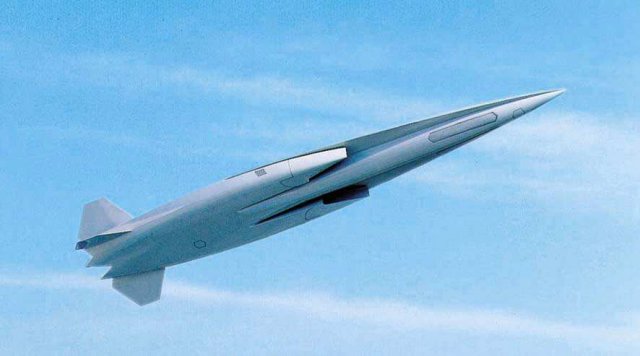The missile that should replace the Air-to-Ground Medium Range Missile [ASMP] by 2035
Technological challenges and strategic choices
The choice between stealth and hypervelocity for the future missile of the airborne component of the French nuclear deterrent remains uncertain. Both options under consideration involve several technological challenges, as highlighted by the Office national d'études et de recherches aérospatiales [ONERA]. However, according to ONERA, the strategy of penetrating adversary defenses with hypersonic speed missiles remains a major scientific and technological challenge, requiring the intervention of multiple disciplines.In a budgetary opinion published in October 2021, Deputy Christophe Lejeune had indicated that a technological solution for ASN4G would soon be selected. il had explained that ONERA and MBDA had developed these two tracks for the future missile.
The first track was a ramjet missile from the Camosis upstream study plan (PEA), which focused on stealth. This missile could fly at a speed of 4,000 to 5,000 km/h, twice as fast as an ASMP/A but below the hypersonic threshold.
The second track was a hypervelocity super ramjet missile from the Prometheus PEA, which focused on hypervelocity. He added that the technological solution that would be chosen could be a manoeuvring hypersonic missile, capable of guaranteeing the capacity to penetrate defences in a context of increasing denial of access. He had also pointed out that a mixed ramjet test had recently been conducted in the United States for the Prometheus AEP.
The maneuverable hypersonic missile with the ability to guarantee defense penetration capability is expected to be operational by 2035 and will need to remain so beyond the 2050s.
Revelations by Admiral Hervé de Bonnaventure
At a parliamentary hearing, Admiral [2S] Hervé de Bonnaventure, defense advisor to MBDA's CEO, revealed a few more details about the ASN4G. He recalled that technological work on this ASN4G began as early as the 1990s and was clearly oriented toward the very high speed domain.MBDA conducted studies on hypersonics as early as 2000-2010, as part of the PROMETHEE 1, 2, and 3 programs, in co-contracting with ONERA. The performance of the ASN4G is even better than that of the ASMPA-R. It should be operational by 2035 and should remain so beyond the 2050s, hence the need to anticipate the ground/air defences of the adversary by that time. According to the Admiral, very high performance in speed and manoeuvre is the best method to achieve detection as late as possible, complicate the task of tracking a radar, or even of hooking up and disorganising an anti-missile missile attack. The ASN4G will be compatible with the Rafale and catapultable by an aircraft carrier.
The development of hypersonic technologies
André-Hubert Roussel, ArianeGroup's executive chairman, also confirmed that the first flight of the V-MAX hypersonic glider, launched by a sounding rocket, is scheduled, and that a second demonstrator, V-MAX2, will be its extension. The French Defense Procurement Agency (Direction Générale de l'Armement) has entrusted ArianeGroup with several upstream studies on future weapon systems based on these hypersonic technologies. The development of these technologies could therefore have significant repercussions on nuclear deterrent weapons in the years to come.
Découvrez cet article sur Air&Cosmos

